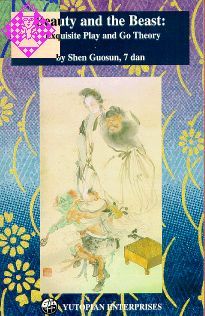Artikelnummer
LGGUOBATB
Autor
Beauty and the Beast
Y17 - Exquisite Play and Go Theory
172 Seiten, kartoniert, Yutopian, 1. Auflage 1996
Final vergriffen
This book treats the major facets of go theory from two perspectives: historical and practical. Classical Chinese treatises on go are referenced, and the development of the concepts in modern play is described in detail. Although the author readily acknowledges the great contributions of the Japanese masters to go theory, he stresses more recent contributions by modern-day Chinese masters. Then each theoretical concept is shown applied to practical situations on the go board, so that the readers can quickly apply the concepts in their own play. The examples of theory-in-action are centered around key moments in important tournament games. The author illustrates, with dramatic effect, how seemingly incomprehensible "bolts from the blue" that we sometimes call "exquisite plays" are really firmly rooted in the application of go theory.
Along the way, the author provides us with biographical information, anecdotes, and playing-style profiles on all the leading Chinese players of the 1980s. Some of this material is not available in any other form, because it stems the author's intimate knowledge of the players as his colleagues and friends.
Along the way, the author provides us with biographical information, anecdotes, and playing-style profiles on all the leading Chinese players of the 1980s. Some of this material is not available in any other form, because it stems the author's intimate knowledge of the players as his colleagues and friends.
| EAN | 1889554227 |
|---|---|
| Gewicht | 220 g |
| Hersteller | Yutopian |
| Breite | 10,3 cm |
| Höhe | 16 cm |
| Medium | Buch |
| Erscheinungsjahr | 1996 |
| Autor | Shen Guosun |
| Sprache | Englisch |
| Auflage | 1 |
| ISBN-10 | 1889554227 |
| Seiten | 172 |
| Einband | kartoniert |
| Name | Yutopian Enterprises |
|---|---|
| yutopian@netcom.com |
v Foreword
vii Translator's Preface
1. The Master of Deployment Never Faces Combat
001 Breakthrough
010 Orderly Progress, Step-by-Step
017 Embellish It and Use It Again
023 Weed Through the Old to Bring Forth the New
2. The Master of Combat Never Faces Defeat
029 Sacrificing Stones to Reduce Liberties
036 Attack is the Best Defense
040 The Strong Easily Force the Weak
046 Attack and Defense Have Limits
3. The Master of Defeat Never Faces Chaos
053 What Seems Surrounded Is Not Surrounded
060 Off-the-Cuff Response
4. The Master of Attack Is Aware of Opportunities
065 Three Birds With One Stone
069 Take to the Skies and Attack
073 Advance and Retreat at Will
077 Catch Him Off Guard
5. The Master of Planning Never Faces Restrictions
083 Tangled Up in the Main Threads
088 Treachery After Trickery
092 Mutual Envelopment
097 Two Camps Confronting One Another
6. The Master of Plots Knows Every Detail
105 Seemingly Clumsy But Actually Exquisite
110 Front and Back, Bending and Stretching
115 A One-Move Exchange
118 He Can Bend or Stretch
7. The Master of Arms Knows Theory
123 Metamorphosis Between Attack and Defense
126 Marshalling the Troops for Deployment
131 Saving Stones in Trouble / Making an Exchange
136 An Already Weak Position
139 Influence Leads the Way
143 Hopelessly Outnumbered
147 Hide an Opportunity, Recognize an Opportunity
154 Roll-up and Capture
158 Act According to Circumstances
162 A Difficult Problem
167 Glossary
169 Index
vii Translator's Preface
1. The Master of Deployment Never Faces Combat
001 Breakthrough
010 Orderly Progress, Step-by-Step
017 Embellish It and Use It Again
023 Weed Through the Old to Bring Forth the New
2. The Master of Combat Never Faces Defeat
029 Sacrificing Stones to Reduce Liberties
036 Attack is the Best Defense
040 The Strong Easily Force the Weak
046 Attack and Defense Have Limits
3. The Master of Defeat Never Faces Chaos
053 What Seems Surrounded Is Not Surrounded
060 Off-the-Cuff Response
4. The Master of Attack Is Aware of Opportunities
065 Three Birds With One Stone
069 Take to the Skies and Attack
073 Advance and Retreat at Will
077 Catch Him Off Guard
5. The Master of Planning Never Faces Restrictions
083 Tangled Up in the Main Threads
088 Treachery After Trickery
092 Mutual Envelopment
097 Two Camps Confronting One Another
6. The Master of Plots Knows Every Detail
105 Seemingly Clumsy But Actually Exquisite
110 Front and Back, Bending and Stretching
115 A One-Move Exchange
118 He Can Bend or Stretch
7. The Master of Arms Knows Theory
123 Metamorphosis Between Attack and Defense
126 Marshalling the Troops for Deployment
131 Saving Stones in Trouble / Making an Exchange
136 An Already Weak Position
139 Influence Leads the Way
143 Hopelessly Outnumbered
147 Hide an Opportunity, Recognize an Opportunity
154 Roll-up and Capture
158 Act According to Circumstances
162 A Difficult Problem
167 Glossary
169 Index
When go enthusiasts watch a game between two masters, they can't help but feel that the masters' play is exquisite beyond words. After watching a game, they think they have gained quite a bit of knowledge. But when they try to apply it in their games, they can't even gain a small advantage. What's worse, they find their own old familiar tricks are also ineffective. Finally, they heave a deep sigh and say, "I can only watch the masters' games, I can't learn from them." But actually, it's not that they can only watch and not learn from the masters' games, but that when watching, they only see that a move is "exquisite" without understanding "why is it exquisite?"
Occasionally, we hear enthusiasts asking a master for lessons: "Master X, I want to learn to play go. What's the secret of success? Can you teach me?" Master X laughs and replies, "There's no secret to playing go." This answer is correct, but also incorrect. There is a secret to playing go. The secret can be encompassed in two words: "go theory." But to clearly and concretely explain "go theory" would take tens of thousands of words. It's not, as the beginner might imagine, "I'll have this all down pat in two or three lessons."
This writer is attempting this book in order to answer these two questions. Through a study of entertaining excerpts from the domestic and international games of the top Chinese masters, we shall find the key moments when exquisite moves were played. Then following further, fresh analysis, go theory will be revealed. At the same time that we help the reader appreciate exquisite play, we will make clear exactly why the exquisite move is an exquisite move. If an exquisite move doesn't meet our specific standards, then it cannot be an exquisite move. Exquisite moves rely on go theory for their very existence. That's why this book is entitled Exquisite Play and Go Theory.
To add some interest to your reading, at the same time that we are introducing an excerpt of a game we will introduce you to the players' styles and experiences, the current situation in a given tournament, the background of the game, the significance of the game, and so forth. In the past few years, the young Chinese players have made rapid progress, attracting a high level of attention from the Japanese go world. Japan's Go Saint (Kisei) Fujisawa Shuko believes that if the Japanese youth do not learn from the Chinese youth, then they are in danger. Setting an example, he has personally led a group of Japanese youths (also personally selected by him) on a tour of China each year for four years. In truth, compared to their teachers, China's young players are swelling rapidly in number, and their playing styles are more distinctive. Ma Xiaochun, Shao Zhenzhong, Cao Dayuan, and Liu Xiaoguang each have their own distinguishing features. Each has a different understanding of go. Artistically, no one style is superior to any of the others. In actual play, when there is equal justification for either of two courses of action, it is the style that dictates the choice between the two. In this book, we devote a lot of space to integrating playing style with the introduction of their games. At the same time that we let the reader know about go theory, so your train of thought will gradually get on the right track, the reader will learn about style, to widen that train of thought.
The way we have chosen to write this book is quite different from previous go books. What do you, the reader, think of it? Due to limitations in writing skill and go strength, we are not sure that our aim of "gradual understanding of go theory through appreci-ating exquisite play" can be realized. All suggestions for improvement are most welcome.
Shen Guosun, 7 Dan, foreword
Occasionally, we hear enthusiasts asking a master for lessons: "Master X, I want to learn to play go. What's the secret of success? Can you teach me?" Master X laughs and replies, "There's no secret to playing go." This answer is correct, but also incorrect. There is a secret to playing go. The secret can be encompassed in two words: "go theory." But to clearly and concretely explain "go theory" would take tens of thousands of words. It's not, as the beginner might imagine, "I'll have this all down pat in two or three lessons."
This writer is attempting this book in order to answer these two questions. Through a study of entertaining excerpts from the domestic and international games of the top Chinese masters, we shall find the key moments when exquisite moves were played. Then following further, fresh analysis, go theory will be revealed. At the same time that we help the reader appreciate exquisite play, we will make clear exactly why the exquisite move is an exquisite move. If an exquisite move doesn't meet our specific standards, then it cannot be an exquisite move. Exquisite moves rely on go theory for their very existence. That's why this book is entitled Exquisite Play and Go Theory.
To add some interest to your reading, at the same time that we are introducing an excerpt of a game we will introduce you to the players' styles and experiences, the current situation in a given tournament, the background of the game, the significance of the game, and so forth. In the past few years, the young Chinese players have made rapid progress, attracting a high level of attention from the Japanese go world. Japan's Go Saint (Kisei) Fujisawa Shuko believes that if the Japanese youth do not learn from the Chinese youth, then they are in danger. Setting an example, he has personally led a group of Japanese youths (also personally selected by him) on a tour of China each year for four years. In truth, compared to their teachers, China's young players are swelling rapidly in number, and their playing styles are more distinctive. Ma Xiaochun, Shao Zhenzhong, Cao Dayuan, and Liu Xiaoguang each have their own distinguishing features. Each has a different understanding of go. Artistically, no one style is superior to any of the others. In actual play, when there is equal justification for either of two courses of action, it is the style that dictates the choice between the two. In this book, we devote a lot of space to integrating playing style with the introduction of their games. At the same time that we let the reader know about go theory, so your train of thought will gradually get on the right track, the reader will learn about style, to widen that train of thought.
The way we have chosen to write this book is quite different from previous go books. What do you, the reader, think of it? Due to limitations in writing skill and go strength, we are not sure that our aim of "gradual understanding of go theory through appreci-ating exquisite play" can be realized. All suggestions for improvement are most welcome.
Shen Guosun, 7 Dan, foreword
Mehr von Yutopian
-
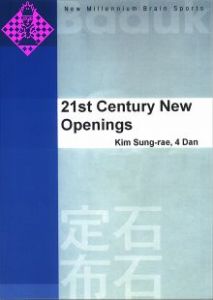 21st Century New Openings15,50 €
21st Century New Openings15,50 € -
 Dictionary of Basic Fuseki 418,50 €
Dictionary of Basic Fuseki 418,50 € -
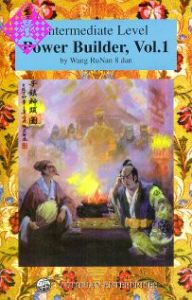 Power Builder, Vol. 117,00 €
Power Builder, Vol. 117,00 € -
 Dictionary of Basic Fuseki 318,50 €
Dictionary of Basic Fuseki 318,50 € -
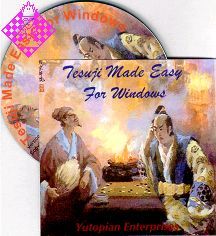 Tesuji Made Easy For Windows59,95 €
Tesuji Made Easy For Windows59,95 € -
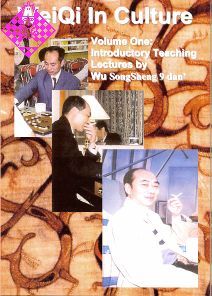 WeiQi In Culture 112,50 €
WeiQi In Culture 112,50 €

